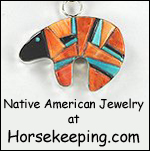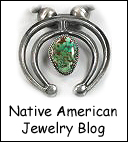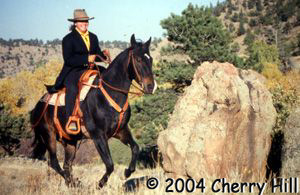VETERINARY CARE
© 2010 Cherry Hill © Copyright Information
Although your veterinarian will perform many routine and emergency tasks for you, you must be responsible for knowing what to schedule and when.
Immunization Annual vaccinations can protect your horse from certain diseases. Most horses should be vaccinated against Tetanus, Eastern and Western Encephalomyelitis, Influenza, and Rhinopneumonitis. In some parts of the country, Potomac Horse Fever, Rabies, and Strangles vaccines are also recommended.
Tetanus (lockjaw) is an infection of the nervous system caused by bacteria that enter through a wound or a foal’s umbilical cord. The muscles stiffen so severely that within a few days the animal dies or must be euthanized.
Encephalomyelitis (sleeping sickness) is caused by a virus carried by a mosquito. The mosquito transports the virus from a wild bird or animal to your horse. The horse gets a high fever, is paralyzed and dies within 2-4 days.
Influenza (flu) is caused by a virus. It’s a common respiratory disease spread by coughing that is rarely fatal.
Rhinopneumonitis (snots) usually affects 4-6 month old foals. Pregnant broodmares that come in contact with this virus might abort.
Distemper (strangles) is a highly contagious bacterial infection that causes the glands near the throat to swell. The horse will not eat or drink and gets a very high fever but rarely dies.
Rabies rarely affects horses but can result in death. The virus is transmitted from an infected animal to the horse by a bite, usually from a dog, a skunk, a fox, or a bat.
Equine Infectious Anemia (swamp fever) is a virus that infects the horse’s blood and is spread from one horse to another through a biting insect. There is no vaccine to protect your horse against swamp fever but the Coggins test identifies carriers.
Diseases are spread either directly from one horse to another, from a contaminated stall or feeder to a horse, between horses eating or drinking from communal areas, or through the air.
If a horse is contaminated, use a combination of treatment, disinfecting, and quarantine to keep the disease from spreading and to eliminate the organism that caused it.
Poison Prevention Horses investigate unknown things with their lips so all dangerous substances must be kept out of their reach. Use safe paint. Don’t let horses get near junk or vehicles where they might ingest toxic paints, plastic, rubber, antifreeze, or battery fluid. Don’t apply insecticides or herbicides near their feed or water areas and be aware of which way the wind is blowing when you are spraying. Read all labels very carefully or you might accidentally give your horse an overdose of an antibiotic, dewormer or nutritional supplement.
Dental Care Once a year your vet should float (rasp) your horse’s molars to prevent dangerous sharp points from cutting the horse’s cheeks and tongue. At the same time, your vet can pop any caps (baby teeth) that might hang on when the adult teeth have erupted. If your horse has wolf teeth (small tooth directly in front of the premolars) it can be removed to prevent problems with the snaffle bit.
Parasite Control All horses have internal parasites. The worm eggs in manure hatch into larvae that are eaten by the horse. Once inside the horse they subsist on the horse’s blood while they mature, lay eggs and continue the cycle. Bots live inside the horse until the pupae drops to the ground with manure and hatches into a bot fly. Although bot flies look like bees, they don’t sting but lay eggs on the horse’s hair. Nose bots try to fly up the horse’s nose, which causes most horses to strike viciously with their front legs and run frantically. This is a very dangerous situation.
To prevent your horse from becoming dull coated, pot bellied, and lethargic, deworm your horse every 8 weeks. Remove manure from his living quarters daily. Remove bot eggs from his hair every day beginning in August.
Taking good care of a horse is one of the most satisfying experiences that I know. There is no sight quite like a bright, alert horse that is sound, shiny and ready to go.
Read Full Post »
![]()




























